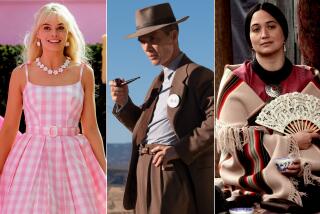Thriller Sees Power of Grief
- Share via
The central event of “Don’t Look Now,” a 1973 British thriller, occurs in its first few minutes, as a pair of children innocently play in the back yard, out of sight of their parents, who are working in the living room of their English countryside home.
Then this idyllic life comes crashing down: The father (Donald Sutherland) accidentally spills something on a photographic slide he’s working on and then, seemingly without provocation, races out of the house. He runs to a small pond and finds his young daughter drowned.
The movie jumps to Venice, a few months later, where John Baxter (Sutherland) is working on restoring a dilapidated church and wife, Laura, (Julie Christie) is attempting to restore her state of mind in the aftermath of their child’s death.
But their son, left behind in England at boarding school, and their dead child continue to control the couple’s fate, especially after the Baxters meet a blind woman who claims to be able to see their dead daughter and says the girl is warning them to leave Venice.
Though the theory of “second sight”--the ability to see the future--plays an important part of “Don’t Look Now,” the source of the film’s intense feeling of dread is the shadowy back streets of Venice where the couple keep getting lost.
Sutherland and Christie are at the peak of their skills portraying bright, sensible people who fall victim to their grief. The ghostlike Hilary Mason is quite scary as the blind clairvoyant.
Well-done psychological thrillers have been few and far between since the heyday of Alfred Hitchcock, and none in the past two decades has dug deeper into the fragile psyches of its characters than this film. While other thrillers from the same era, such as “The Exorcist” and “Obsession,” now seem overplotted or sensationalized, 20 years haven’t dulled the startling horror of “Don’t Look Now.”
“Don’t Look Now” (1973) , directed by Nicolas Roeg. 110 minutes. Rated R.
More to Read
Only good movies
Get the Indie Focus newsletter, Mark Olsen's weekly guide to the world of cinema.
You may occasionally receive promotional content from the Los Angeles Times.







